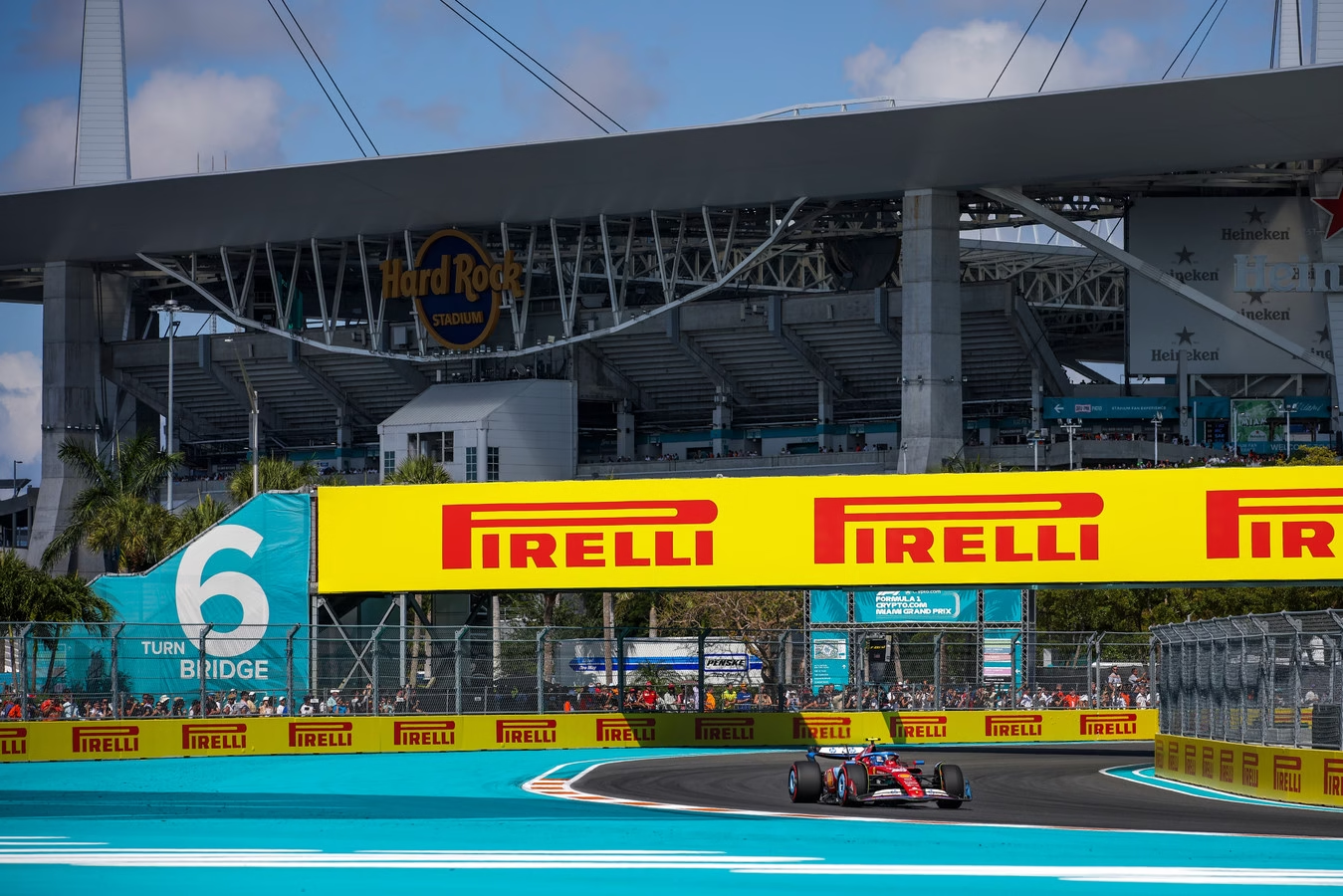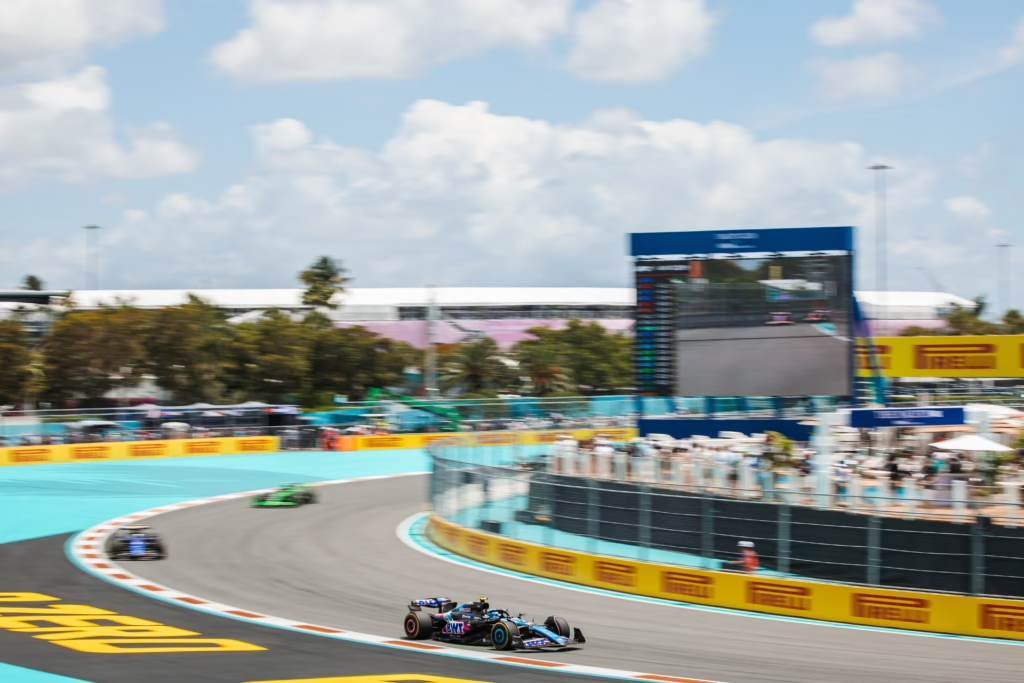The Miami International Autodrome, inaugurated in May 2022, represents the cutting edge of modern urban circuits in Formula 1. Its combination of wide straights and technical sections demands a meticulous analysis of each corner. In this article, we will address its history, track characteristics, and an in-depth technical analysis of the challenges it poses to drivers and teams.
History of the Miami International Autodrome
The inclusion of the Miami Grand Prix on the F1 calendar responded to Liberty Media’s interest in consolidating the championship’s American presence. The project began in 2019 thanks to an agreement with Miami-Dade County and the owner of Hard Rock Stadium, Stephen Ross. The semi-permanent design conceived by Hermann Tilke integrates stadium access, green areas, and pure speed straights.
Circuit Overview and Technical Data
- Circuit Length: 5.412 km
- Number of Corners: 19 (7 left, 12 right)
- Race Distance: 57 laps (308.628 km total)
- Driving Direction: Counter-clockwise
- DRS Zones: 3
- Track Type: Street circuit (temporary facility built around the Hard Rock Stadium)

GabrielStella
Track Analysis and Key Points
The main straight, approximately 1.1 km long, is among the longest on the calendar. The single-seaters reach over 330 km/h before facing the braking zone of Turn 17. In this deceleration, precise brake distribution and stability are essential to prepare for the oversteer at the apex and maximize traction upon exit.
The middle sector, comprising Turns 4 to 16, alternates between slow and medium-speed corners, testing lateral aerodynamic load and mechanical grip. A millimeter-perfect line—with margins of barely ±5 cm—can be the difference between maintaining pace and losing critical tenths of a second. This section is key to building an advantage before the DRS zones.
The fast corners of the first sector (1–3) require medium-high downforce to maintain stability, while the final chicane (18–19) directly influences tire degradation, especially on the front-left flank. An aggressive style in this area can penalize up to 0.5 s per lap on softer compounds. Here, precision in traction and tire management define the long-term pace.
The most critical braking points include Turn 7—where cars brake from 320 km/h to 95 km/h in just 120 m—and Turn 11, which marks the start of the first DRS zone. In both places, the cooling of discs and pads must be optimized to avoid fading. Inadequate thermal management compromises the overall lap performance.
The three DRS zones are located after Turn 11, after Turn 16, and on the straight after Turn 19. Adjusting the rear wing angle and choosing the right compound can define the success of an overtaking maneuver. The aerodynamic configuration makes a difference in wheel-to-wheel duels.

Technical Aspects and Race Strategies
The proximity to the sea and the filling of esplanades generate gentle undulations that condition the suspension setup. A balance between medium stiffness and additional vertical travel improves traction without sacrificing aerodynamic efficiency on the straights. This compromise is fundamental to avoid compromising the overall stability of the single-seater.
The alternation of slow and fast corners requires a detailed examination of the aerodynamic load: a wing that is too low penalizes performance in the middle sector, while an excessively high wing reduces top speed. Teams often opt for medium downforce configurations with adjustable flaps. The balance between sectors defines the approach for qualifying versus the race.
In telemetry, lateral G-force peaks of 3.2 G are recorded in Turn 11, and longitudinal G-forces of over 1.5 G are recorded during braking for Turns 7 and 17. These data guide brake cooling strategies and the torque map to optimize corner exits from slow turns. Fine data analysis allows for anticipating losses and maximizing performance.
The urban asphalt offers medium tire wear: a stint with the medium compound yields between 18 and 22 laps if graining is managed properly. The undercut before Turn 7 and the intensive use of DRS are usually the key pit stop tactics. A well-executed strategy can compensate for pace differences of up to half a second per lap.

Final Thoughts
The Miami F1 Circuit merges the excitement of an urban Grand Prix with the technical complexity of a highly demanding track. Understanding these elements is essential for any fan who wants to delve deeper into the analysis of how Formula 1 evolves in unconventional environments.
















